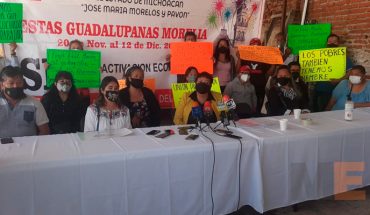U.S. President Joe Biden warned Thursday that Hurricane Ian may have been the “deadliest” in Florida’s history and said he will travel to the site “when conditions allow.”
“This could be the deadliest hurricane in Florida’s history,” he said after a visit to the premises of the agency in charge of natural disasters (FEMA) in Washington.
“The numbers (…) they are not yet clear, but we receive reports of a substantial loss of life” from the hurricane, which has devastated parts of this southeastern U.S. state.
“When conditions allow, I will go to Florida,” he said. He added that he also plans to visit the Caribbean island territory of Puerto Rico, which is still recovering from Hurricane Fiona.
Ian, downgraded to a tropical storm, made landfall Wednesday afternoon as a Category 4 hurricane (on a scale of 5) in southwest Florida, before continuing its passage through the state, with strong winds and torrential rain.
It is still too early to make an assessment, but some material damage was already visible a few hours after the hurricane passed.
Read: Hurricane Ian causes catastrophic flooding on West Coast Florida after making landfall as a Category 4
In the port of Fort Myers, some boats were partially submerged and another ran aground on the shore.
On Thursday morning, more than 2.6 million homes or businesses remained without power, out of a total of 11 million, according to the specialized site PowerOutage.
Hurricane Ian leaves flooding in Florida
Suzanne Clarke walks to her daughter’s apartment sinking into the waist-deep water. She drags a kayak with her and when she arrives at the house, she climbs her two little granddaughters into the boat and pushes them onto a higher road where she has parked her car.
The building where his daughter lives in McGregor, a small town in southwest Florida, flooded Wednesday after Hurricane Ian sent the nearby Caloosahatchee River overflowing.
“I’m very stressed, this has been very hard,” says Clarke, 54. “I came early, the water was very high, and I was scared.”
A day after the passage of Hurricane Ian, the inhabitants of Lee County, one of the most affected by the storm, check under a radiant sun the damage suffered in the last hours.
In Iona, a village located about 10 km from McGregor, a street was flooded and only a few tall cars dare to roll over the water.
Ronnie Sutton is one of its inhabitants. He spent the night at a friend’s house in Cape Coral, about 10 km south of there, and has not yet been able to reach his home, but assumes that the water destroyed everything.
“It’s terrible. I guess this is the price to pay for being at sea level. Sometimes it turns against you,” laments the 67-year-old.
Boats in the middle of the road
In Fort Myers, a quiet town of about 83,000 people, the rise of the Caloosahatchee River pushed dozens of small boats moored in the marina to the streets of downtown, where they now rest on the mainland.
Tom Johnson attended the floods in the front row from his apartment next to the harbor, on the second floor of a simple two-story building.
Wednesday afternoon, he watched as the hurricane pushed two boats into the courtyard of the housing complex within five minutes.
“I was scared because I had never experienced anything like this,” he says, pointing to the two boats. “I heard the most terrible noises, with things flying everywhere, the doors flying,” adds the 54-year-old whose house was not damaged.
Read: Hurricane Ian strengthens to category 4 and approaches Florida after leaving destruction in Cuba
One of her neighbors, Janelle Thil, was not so lucky. His apartment on the ground floor began to flood and he had to ask for help from some inhabitants of the building to get out of there.
“They took my dogs. I jumped out of the window and swam there,” he says, pointing to the empty house on the second floor where he took refuge with other people.
This 42-year-old woman has just cleaned up the mud that entered her house and now counts the few belongings she did not lose in the flood.
“I cried a little when I went back to my apartment, opened the door and had to wait five minutes for all the water to come out,” she says. “I loved my house, but I’m alive and that’s the main thing,” she adds resignedly.
What we do at Animal Político requires professional journalists, teamwork, dialogue with readers and something very important: independence. You can help us keep going. Be part of the team.
Subscribe to Animal Político, receive benefits and support free journalism.#YoSoyAnimal





